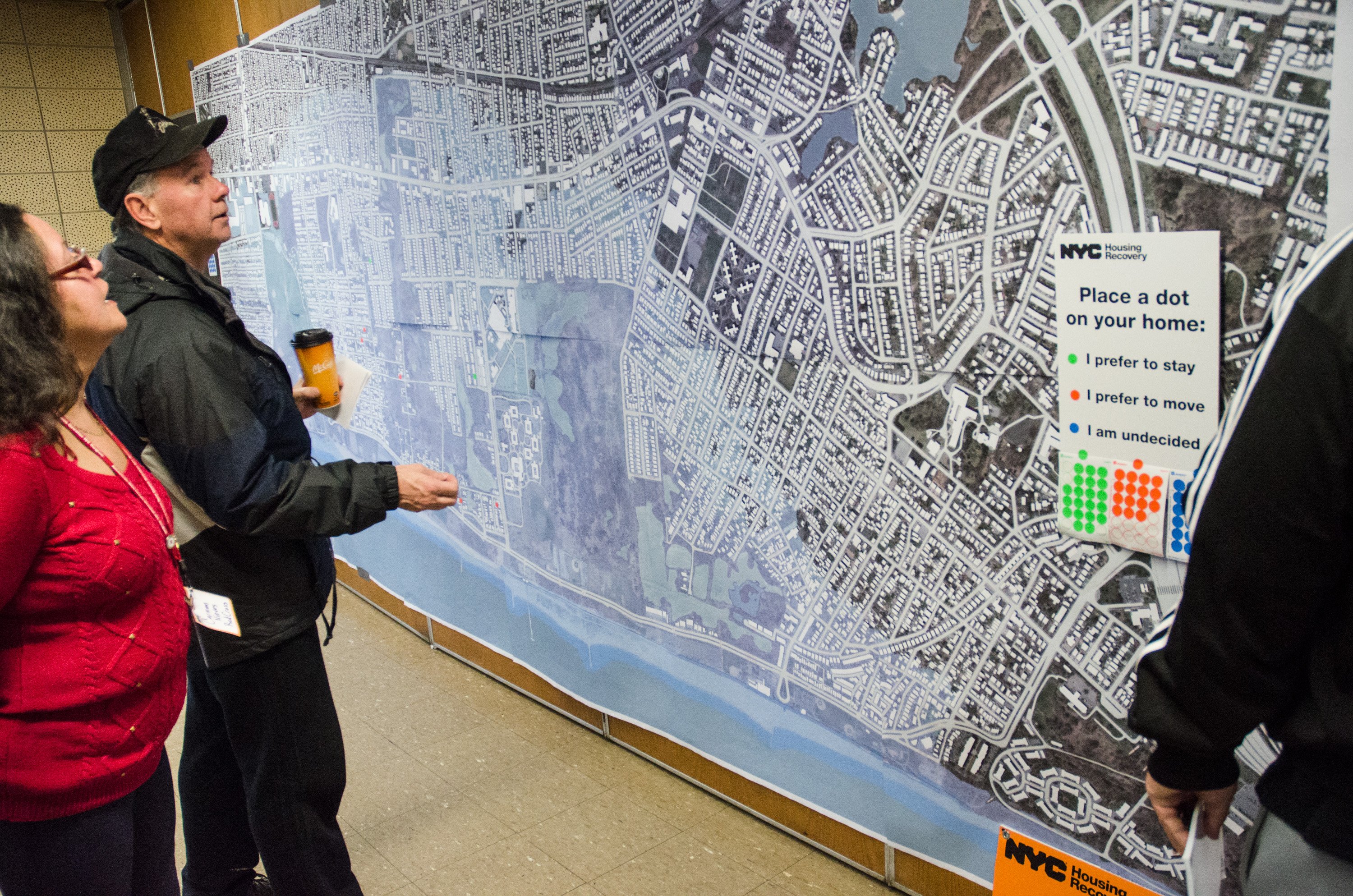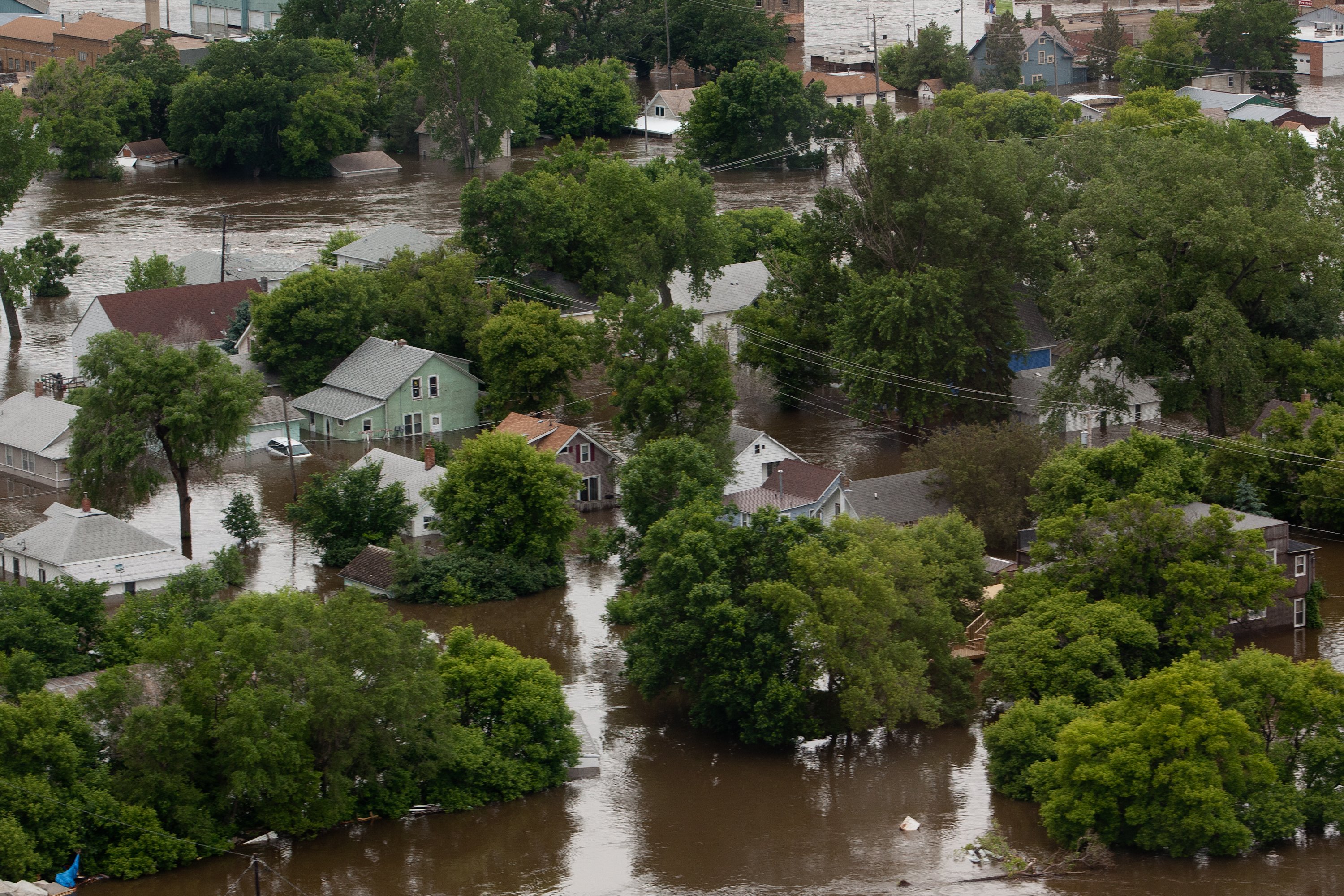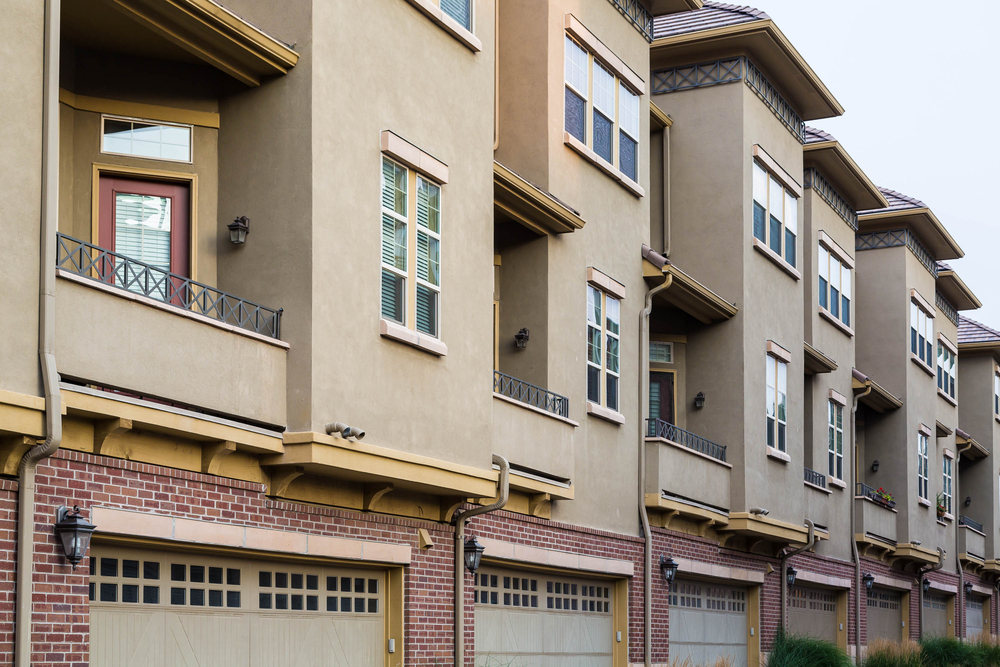Over the past 50 years, every state has experienced flooding or some sort of flash flood. This means that as a homeowner or renter, you don't have to live near a body of water to be exposed to the dangers of flooding. Heavy spring rains, a sudden thunderstorm or melting snow from the mountains hundreds of miles away can be enough to cause rising water and flooding in the most unexpected places.
The Midwest frequently experiences river flooding, the Northeast can suffer Nor'easters and spring melting, and the West Coast frequently has flooding from November through March. A flash flood can bring a wall of water anywhere from 10 to 20 feet high. A few inches of water from a flood can easily cause tens of thousands of dollars in damage. If you're a homeowner, the purchase of flood insurance is mandatory if the property is located in a high-risk flood area, and some lenders can still require it if you live in an area with a lower risk of flooding.
Floods are No. 1 disaster in U.S.
Many people don't realize the floods are the number one disaster in the U.S. and the cost of recovery grows every year. According to the Federal Emergency Management Agency (FEMA), the average flood claim from 2008 to 2012 was $42,000. In 2012, the average flood insurance policy cost $650 per year. In 2014, average claims paid ranged from a low of $10,476 to a high of $42,275. Flood insurance rates in 2015 are expected to increase by as much as 18%.
Hurricane season doesn't start until June 1, and even though a quiet season is forecast, heavy rains across the Midwest and South are already causing flooding problems. Here are 5 things you should know about flood insurance and preparing for flooding disasters.

Photo: Kenneth Wilsey/FEMA
Flood hazard areas are identified by the National Flood Insurance Program (NFIP) as one of three specific areas. Special Flood Hazard Areas (SFHA) and are defined as areas have a 1% chance of being inundated by a flood event in any given year. The 1% flood chance is often referred to as the 100-year flood or as the base flood.
SFHAs are labeled as Zone A, Zone AO, Zone AH, Zones A1-A30, Zone AE, Zone A99, Zone AR, Zone AR/AE, Zone AR/AO, Zone AR/A1-A30, Zone AR/A, Zone V, Zone VE, and Zones V1-V30.
Moderate flood zones fall within the 500-year flood zone or have a 0.2% chance of flooding and are identified as Zone B or Zone X.
Areas identified as having a minimal flood hazard are higher than the 0.2% elevations and are identified as Zone C or Zone X.
Lenders believe that residents who live in a high-risk flood area have a one in four chance of flooding during the term of their 30-year mortgage and that's why flood insurance is required. Homes in moderate and low risk areas that have mortgages are typically not required to have flood insurance.
The NFIP has a Flood Insurance Rate Map (FIRM) which identifies the flood hazards for a community. FIRM has a tutorial for homeowners to help them identify the flood risk for their property so they know whether or not they should insure their home from a flood loss.

Photo: George Armstrong/FEMA
2. What does flood insurance cover?
Flood insurance covers both the building and contents inside, but it doesn't cover the land on which the dwelling is located. There may be limited coverage for basements, crawlspaces, lower floors and enclosed floors of elevated buildings.
Dwelling coverage will cover property up to $250,000 and contents coverage insures up to $100,000 of personal property. The NFIP recommends purchasing both types of coverage since homeowners insurance will not cover losses attributed to flooding. Flood insurance is not a valued policy and does not pay more than the policy limit for any losses. Like other insurance policies, purchasers must determine their deductibles for their property and contents coverage, which will affect their rate.
Building coverage covers:
- The building and its foundation
- The electrical and plumbing systems
- Major systems like central air conditioning equipment, furnaces and the hot water heater
- Some appliances such as refrigerators, cooking stoves and built-in appliances like dishwashers
- Permanently installed carpeting over an unfinished floor (e.g., wood, cement)
- Window blinds
- Permanently installed paneling, wallboard, bookcases and cabinets
- A detached garage (up to 10% of building property coverage)
Coverage for contents includes:
- Clothing, furniture and electronic equipment
- Curtains
- Portable and window air conditioners
- Portable appliances such as microwaves and dishwashers
- Carpeting that is not covered under the building coverage
- Clothes washers and dryers
- Food freezers and the food in them
- Certain valuable items such as original artwork and furs (up to $2,500)

Photo: Andrea Booher/FEMA
3. What it doesn't cover
There are a number of damages and expenses a flood insurance policy will not cover. These include:
- Currency, precious metals and valuable papers like stock certificates
- Damage caused by moisture, mildew or mold that could have been prevented by the homeowner or renter
- Property and items outside of the dwelling such as trees, plants, wells, septic systems, walkways, decks, patios, fences, hot tubs, seawalls and swimming pools
- Financial losses due to business interruption or loss of use of the insured property
- Most self-propelled vehicles – e.g., cars, motorcycles, four-wheelers, etc.

Photo: Darryl Brooks/Shutterstock
4. Who should be insured?
Flood insurance is available for individuals who live on a floodplain or in a high-risk area, even if the property has been flooded before. A number of factors will affect the rates such as the type of building, contents, whether or not the property has a basement, if all of the contents are located above ground level, the building construction, the property's elevation and where the physical property is located (in a high-risk or low-risk area).

Photo: Pixsooz/Shutterstock
5. Preparation tips
While most flooding disasters will come with some warning, there are steps that homeowners can take to prepare their properties well before an event occurs or even to prevent minor flooding mishaps.
Start with an inspection of inside and outside spaces:
- Make sure that gutters and downspouts are clear of debris and drain away from the structure.
- Landscaping should not allow water to collect next to the foundation of the building. Remove any damaged or low-hanging branches.
- Check low-lying areas that are vulnerable to water and ensure that they drain away from any basements or foundations.
- Walk through the basement to see what furniture, photos, electronics or other contents could be compromised or damaged during any flooding, and move them to a higher location or place them in protective, waterproof containers.
- Do a full inventory of the home and contents – Going room by room with a video camera and taking photos with a digital camera provides a quick inventory of collectibles, works of art, antiques and other irreplaceable items. The inventory should be stored somewhere other than the home or at least uploaded to the cloud.
Paperwork and preparations:
- Collect insurance policies pertaining to the home and be familiar with what they do and do not cover.
- Ask your insurance agent to do a review of policy limits and exclusions so you know what's covered.
- Prepare supplies in case of a power outage– stock up on essentials like batteries, bottled water, canned goods, flashlights, etc.
- Have a checklist of items to grab if you only have seconds to prepare – e.g., purse, phone, laptop, medications
Taking these steps ahead of time, preparing for a variety of disasters and thinking through what to do and where to go will help save precious time if an unexpected emergency or disaster does occur. Reviewing insurance coverages and reducing the risk where possible will also make the recovery a little easier.
[Related: Do I need flood insurance?]
Want to continue reading?
Become a Free PropertyCasualty360 Digital Reader
Your access to unlimited PropertyCasualty360 content isn’t changing.
Once you are an ALM digital member, you’ll receive:
- Breaking insurance news and analysis, on-site and via our newsletters and custom alerts
- Weekly Insurance Speak podcast featuring exclusive interviews with industry leaders
- Educational webcasts, white papers, and ebooks from industry thought leaders
- Critical converage of the employee benefits and financial advisory markets on our other ALM sites, BenefitsPRO and ThinkAdvisor
Already have an account? Sign In Now
© 2024 ALM Global, LLC, All Rights Reserved. Request academic re-use from www.copyright.com. All other uses, submit a request to [email protected]. For more information visit Asset & Logo Licensing.








